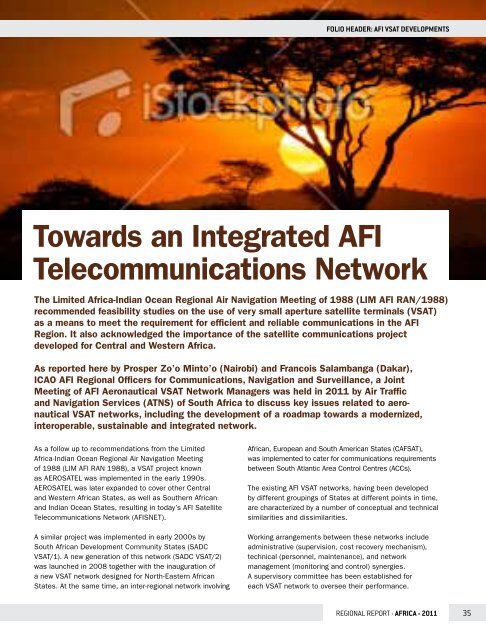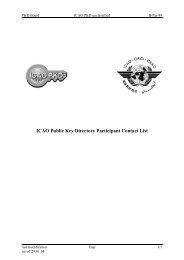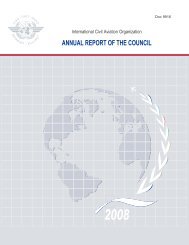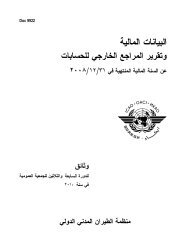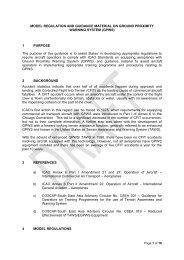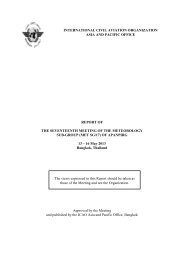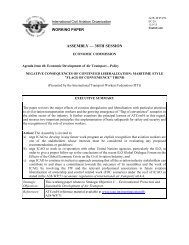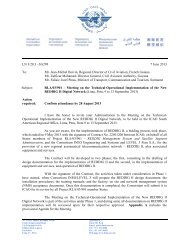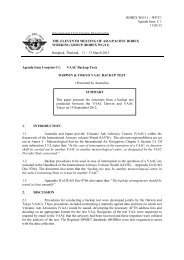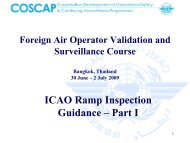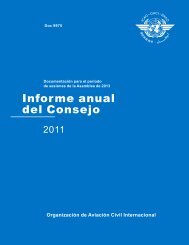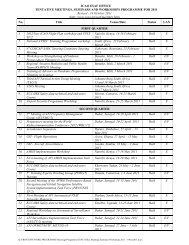Joint Western & Central African (WACAF) Office and - ICAO
Joint Western & Central African (WACAF) Office and - ICAO
Joint Western & Central African (WACAF) Office and - ICAO
You also want an ePaper? Increase the reach of your titles
YUMPU automatically turns print PDFs into web optimized ePapers that Google loves.
FOLIO HEADER: AFI VSAT DEVELOPMENTS<br />
Towards an Integrated AFI<br />
Telecommunications Network<br />
The Limited Africa-Indian Ocean Regional Air Navigation Meeting of 1988 (LIM AFI RAN/1988)<br />
recommended feasibility studies on the use of very small aperture satellite terminals (VSAT)<br />
as a means to meet the requirement for efficient <strong>and</strong> reliable communications in the AFI<br />
Region. It also acknowledged the importance of the satellite communications project<br />
developed for <strong>Central</strong> <strong>and</strong> <strong>Western</strong> Africa.<br />
As reported here by Prosper Zo’o Minto’o (Nairobi) <strong>and</strong> Francois Salambanga (Dakar),<br />
<strong>ICAO</strong> AFI Regional <strong>Office</strong>rs for Communications, Navigation <strong>and</strong> Surveillance, a <strong>Joint</strong><br />
Meeting of AFI Aeronautical VSAT Network Managers was held in 2011 by Air Traffic<br />
<strong>and</strong> Navigation Services (ATNS) of South Africa to discuss key issues related to aero-<br />
nautical VSAT networks, including the development of a roadmap towards a modernized,<br />
interoperable, sustainable <strong>and</strong> integrated network.<br />
As a follow up to recommendations from the Limited<br />
Africa-Indian Ocean Regional Air Navigation Meeting<br />
of 1988 (LIM AFI RAN 1988), a VSAT project known<br />
as AEROSATEL was implemented in the early 1990s.<br />
AEROSATEL was later exp<strong>and</strong>ed to cover other <strong>Central</strong><br />
<strong>and</strong> <strong>Western</strong> <strong>African</strong> States, as well as Southern <strong>African</strong><br />
<strong>and</strong> Indian Ocean States, resulting in today’s AFI Satellite<br />
Telecommunications Network (AFISNET).<br />
A similar project was implemented in early 2000s by<br />
South <strong>African</strong> Development Community States (SADC<br />
VSAT/1). A new generation of this network (SADC VSAT/2)<br />
was launched in 2008 together with the inauguration of<br />
a new VSAT network designed for North-Eastern <strong>African</strong><br />
States. At the same time, an inter-regional network involving<br />
<strong>African</strong>, European <strong>and</strong> South American States (CAFSAT),<br />
was implemented to cater for communications requirements<br />
between South Atlantic Area Control Centres (ACCs).<br />
The existing AFI VSAT networks, having been developed<br />
by different groupings of States at different points in time,<br />
are characterized by a number of conceptual <strong>and</strong> technical<br />
similarities <strong>and</strong> dissimilarities.<br />
Working arrangements between these networks include<br />
administrative (supervision, cost recovery mechanism),<br />
technical (personnel, maintenance), <strong>and</strong> network<br />
management (monitoring <strong>and</strong> control) synergies.<br />
A supervisory committee has been established for<br />
each VSAT network to oversee their performance.<br />
REGIONAL REpORt - AFRICA - 2011 35


